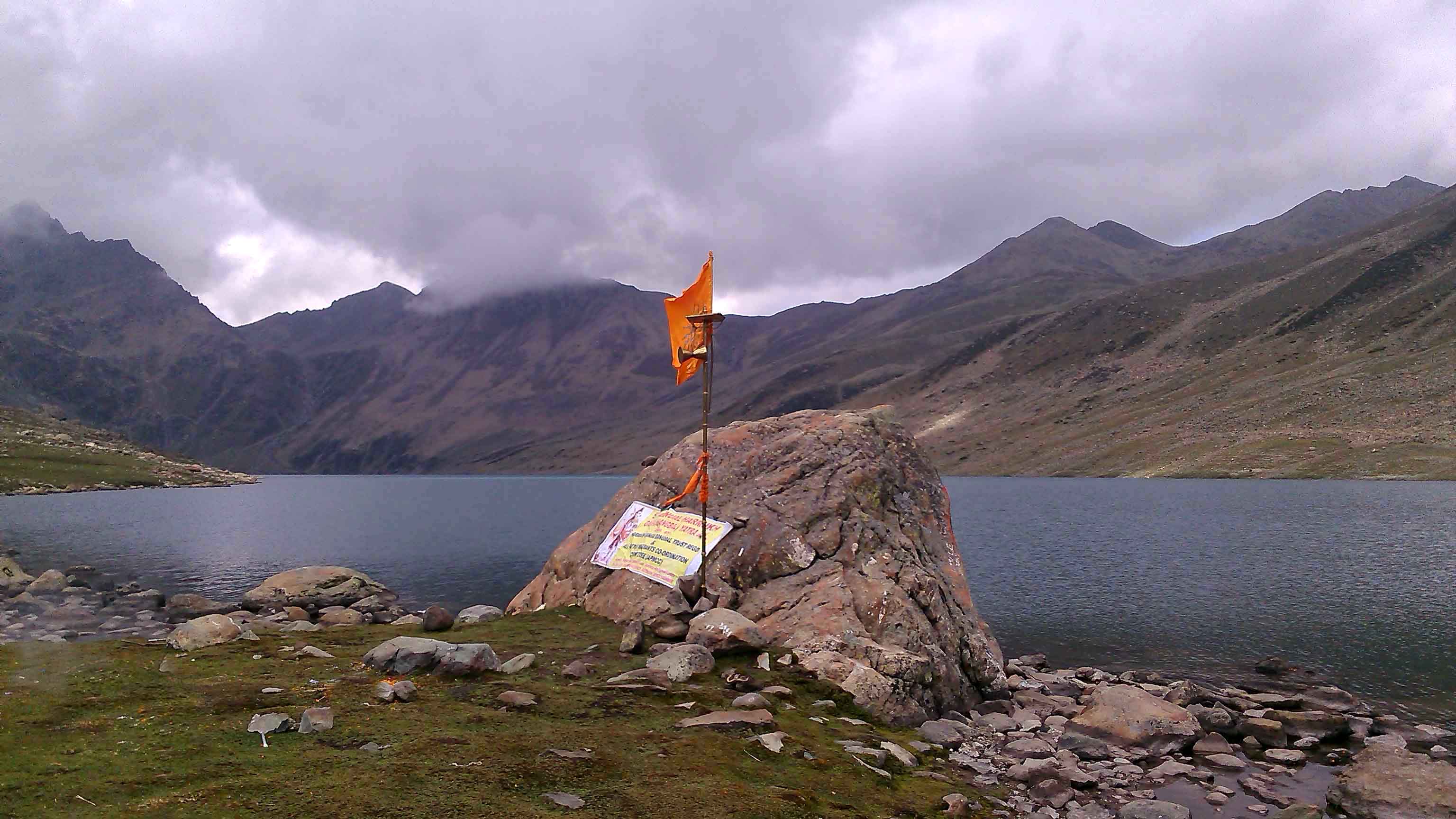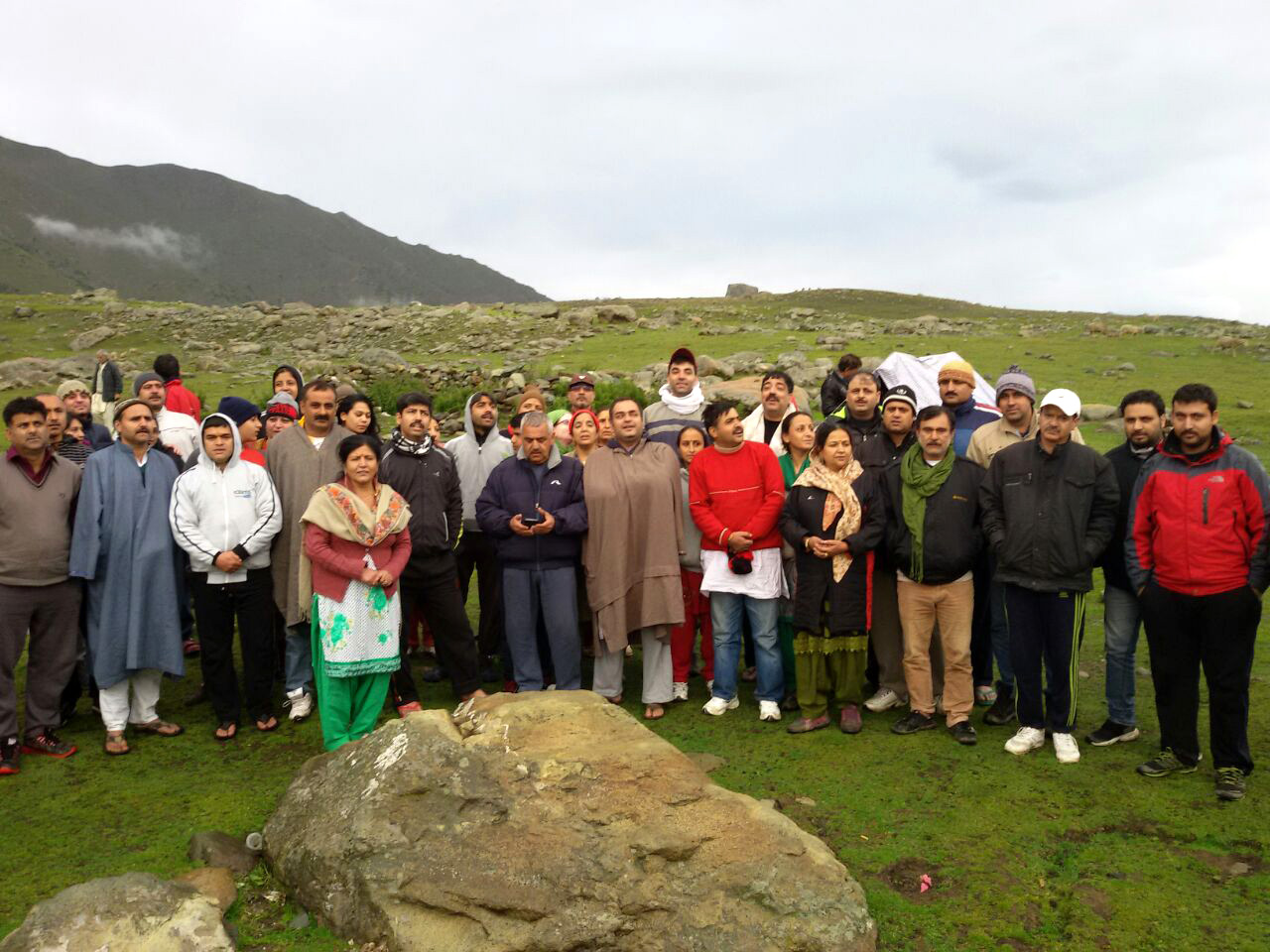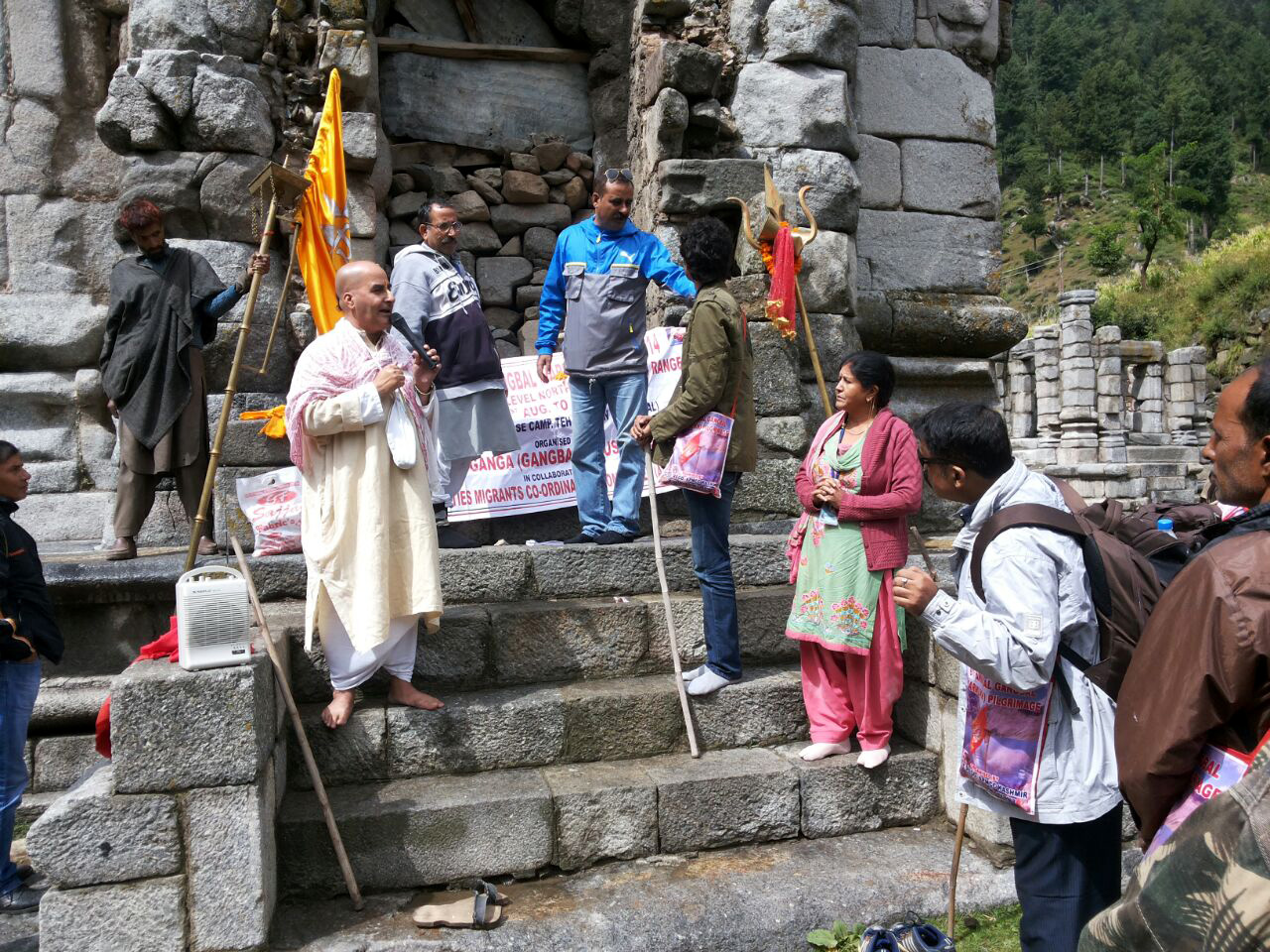What a fresh morning that was! All the tiredness from yesterday’s Trek to Deoria Tal had vanished. It felt like I was never tired and this is my home. No worries no plans no mobile no network, just nature and I.
But then, today’s plan was to reach Rishikesh and handover bike to Ashok Ji  Followed by local sightseeing in Rishikesh and attend Ganga aarti in Haridwar.
Followed by local sightseeing in Rishikesh and attend Ganga aarti in Haridwar.
Checked out from GMVN, Ukhimath and left for Rishikesh at 9:30 AM. Two times Aloo Paratha, 4 coffee, 4 Tea cost me Rs.120.

Enroute Rudraprayag from Ukhimath
Did my lunch at the same place in Srinagar. This time, it was Rajma
Chawal. They were happy to see me again and asked if my journey was
good.
Ukhimath to Rishikesh was around 182km. As I always say returning is
always quick. I was aware for the first 20-30 kilometres later
everything switches to Auto Pilot mode.
When the time ceases to exist we tend to enjoy things the most. The
journey was so involving I didn’t remember when I reached Laxman Jhula.
Placed my luggage at Mountain Fox Adventure.

Ukhimath to Rishikesh Map
Local sightseeing in Rishikesh
I roughly had 5 hours in the Rishikesh. I didn’t had any fix list for
Rishikesh but had thought of seeing Laxman Jhula, renowned Parmarth
Niketan Ashram, Swarg Ashram, Beatles Ashram and Ganga aarti. 5 hours
were enough for all these.
Creeping through the lanes of Rishikesh on the bike, I reached Laxman
Jhula in 5 minutes. Laxman Jhula is a narrow suspension bridge usually
filled with tourists and locals crossing the river. People use Ram Jhula
as well to cross which is little down the river.
I was surprised that bikes were allowed on that narrow bridge.
Honking and moving slowly I crossed the Laxman Jhula. Went to Parmarth
Niketan Ashram first, but didn’t know what to do here. So just took note
of the things and moved to Swarg Ashram. Repeated the same in Swarg
Ashram 
While returning from Swarg Ashram, I spotted a beautiful ghat in
front of Gita Bhawan. It was tempting. Although it was a bright sunny
day, I didn’t mind walking on the hot floor of the ghat and sitting on
the lowest stair next to Ganga.

Ganga ghat in Rishikesh
The scene was heavenly. Ganga was very fast here. Faster than what I saw elsewhere. Water was clear and greenish.
My eyes were stuck in the midst of the river over the sunshine and I was lost in thoughts. I didn’t know when 2 hours passed.
Started my bike towards the last one in the list.
The Beatles Ashram
Maharishi Mahesh Yogi ashram or Beatles Ashram it is known popularly
is not easy to locate. I did may to and fro in search of the Ashram.
Later came to know that a kutcha road on the right-hand side goes to
Beatles Ashram. Ashram gate is around 100 meters from the main road.
It was constructed in the 1960s later the area was declared part of
Rajaji National Park and they had to close down the ashram. A fair
amount of foreigners come to this place wishing to see the place where
the Beatles stayed and composed.
Parked my bike in front of a closed metal gate. Inside the gate, a
50-55-year-old man in kurta was talking with a foreigner. I called that
man and said I want to see the Ashram. From no angle, that place seemed
to be an ashram it was just fallen structures amidst the jungle. He said
its 5 PM and it’s closed.
I said I have come a long way to see this. Finally, I was able to
convince him. He took my driving license and said go carefully its
jungle on the other side with no boundary walls. I said Ok and went
inside. The place was already getting dark.
A stoned footpath leads to the main compound or courtyard. I noticed a
tiny bird very fast and restless. Wasted my 10 minutes to capture it
in-camera.

It was such a restless bird, getting a snap of it certainly needed patience.
The Beatles Ashram had around 130
concrete Kuti equipped with air conditioners and public address system.
Once the meditators went inside the Kuti they locked themselves and
meditated in seclusion. Beatles too did this.
The place seemed poorly maintained.
Creepers covered the building walls. Doors and windows were broken.
Since I didn’t have a guide, it was just walls and doors for me.
I saw jungles starting so returned back.

Walk path inside the Ashram. Going straight will lead to gates of Rajaji National Park

Flowers in the Ashram

Kuti where meditators would inside and practice transcendental meditation technique of Maharshi Mahesh Yogi
2 more old Sanyasis were sitting beside the man who took my DL.
Asked the man if I can have my DL back since I have to return Haridwar today itself.
He said sit we are not going to take
your DL. After a basic introduction of each other, a good piece of
conversation started. I remember the exact words. I said ‘मुझे
आध्यात्मिकता के प्रति झुकाव है. योगियों को ढूंढने की कोशिश भी की मैंने’
No one said anything.
Then I asked two old Sanyasis ‘आप दोनों ने कब संयास लिया’
One of them who was preparing chilam spoke in a deep voice ‘अरे हमें तो चालीस हो गए’
I further spoke ‘आपने तो चालीस साल में काफी साधना की होगी और आपने सन्यास क्यों लिया’
Offering his chilam which I respectfully rejected he shared his story
very briefly of how he retired from his life. Meanwhile, the man who
took my DL returned and sat next to me keeping his left leg folded on
his right thigh.
It was then, I noticed his elephant-like leg. He was rubbing his huge
foot with right palm which only had 2 full fingers rest were half or
less than that. It was getting dark and the scene seemed quite scary in
the jungle.
Sanyasi continued ‘चालीस साल में मैंने
हर घाट का पानी पिया है। अब तो मेरे अपने बच्चे ही मुझे नहीं पहचानते।
यहाँ के योगी और साधुओं से बच कर रहना बाबूजी ।’
He continued ‘आज कल के गुरु गुरु घंटाल
हैं। सच्चे योगी मिलना बहोत मुस्किल हैं । ऊपरी हिमालय में शायद मिल जाये
पर वो दूर रहना ही पसंद करते हैं।’
I asked him how do they survive in extreme cold place like Badrinath in loin.
He replied ‘योग बाबूजी। बहोत शक्ति है इसमें पर मुस्किल भी है’। I said I
know Pranayam. He said ‘ये सब नहीं कुण्डलिनी सुना है आपने।’
I nodded affirmative and name 3-4 chakra which I remembered.
He said ‘जी। इनमे से मूलाधार चक्र जो मेरुदण्ड के अंत में होता है उसपर ध्यान लगते हैं योगी।
और उसे क्रियान्वित करते हैं। उसके सक्रिय होने पर बहोत ऊर्जा उत्पन्न होती
है। जिससे उनको भयंकर ठंडी में भी पसीने छूटते हैं। पर ये तो कुछ नहीं है
उनके लिए।’
I was fascinated and asked them did you
people tried this. He said ‘हमने हर घाट का पानी पिया है’ But I knew he
was lying. A yogi cannot have chilam in his hand but I remained silent
and continued listening to him.
‘अरे हम तो शमशान में भी सोते हैं। शमशान
जानते हो ना। हमें किसी का भय नहीं’ he said penetrating my eyes with
this deep glare. Suddenly the other person itching his elephant leg with
his damaged finger said ‘अरे ये तो कभी कभी शमशान में सोते हैं मै तो हर
दिन ही मरघट मे सोता हूँ, ये जंगल किसी मरघट से कम है क्या? आपको पता है
यहाँ क्या होता है। ‘
He sounded scary. I intervened and said I think the discussion is going elsewhere and also I am getting late.
But they didn’t let me go next we discussed on Bhiksha vritti, the role
of sanyasi towards society, how Vedic dharma is different, the role of
marriage, the role of grihastha towards society, etc.
In the end, I came to know that the
other two sannyasis were disciples of Mahesh Yogi. They showed me some
real photographs of the ashram, Beatles and Mahesh Yogi with themselves.
I was getting desperate to leave, asked for my DL, handed that man 30
rupees, took my bike and rode back to another side of Laxman Jhula.
While returning I went to German bakery which didn’t stand to my expectation.
Handed my bike to Mountain Fox Adventure and left for Haridwar.
Shared tempos are available, but I took a
private one for Rs.100 as I had to catch the bus from Rishikesh bus
stop as soon as possible.

Ganga aarti at Rishikesh
Some photos from Haridwar

Bhagwan Shiva statue in Haridwar

Har ki pauri. Ghats along the Ganga river.

Flowers for maa Gange

Everybody finds balance in Har ki Pauri

Maa
Ganga passes through Har Ki Pauri through a relatively narrow area
which increases the current. Chains like these facilitate the Devotees
to worship and make dubki safely.

Kids at Har ki Pauri hunting for coins using a magnet tied to nylon ropes.








 Followed by local sightseeing in Rishikesh and attend Ganga aarti in Haridwar.
Followed by local sightseeing in Rishikesh and attend Ganga aarti in Haridwar.






























